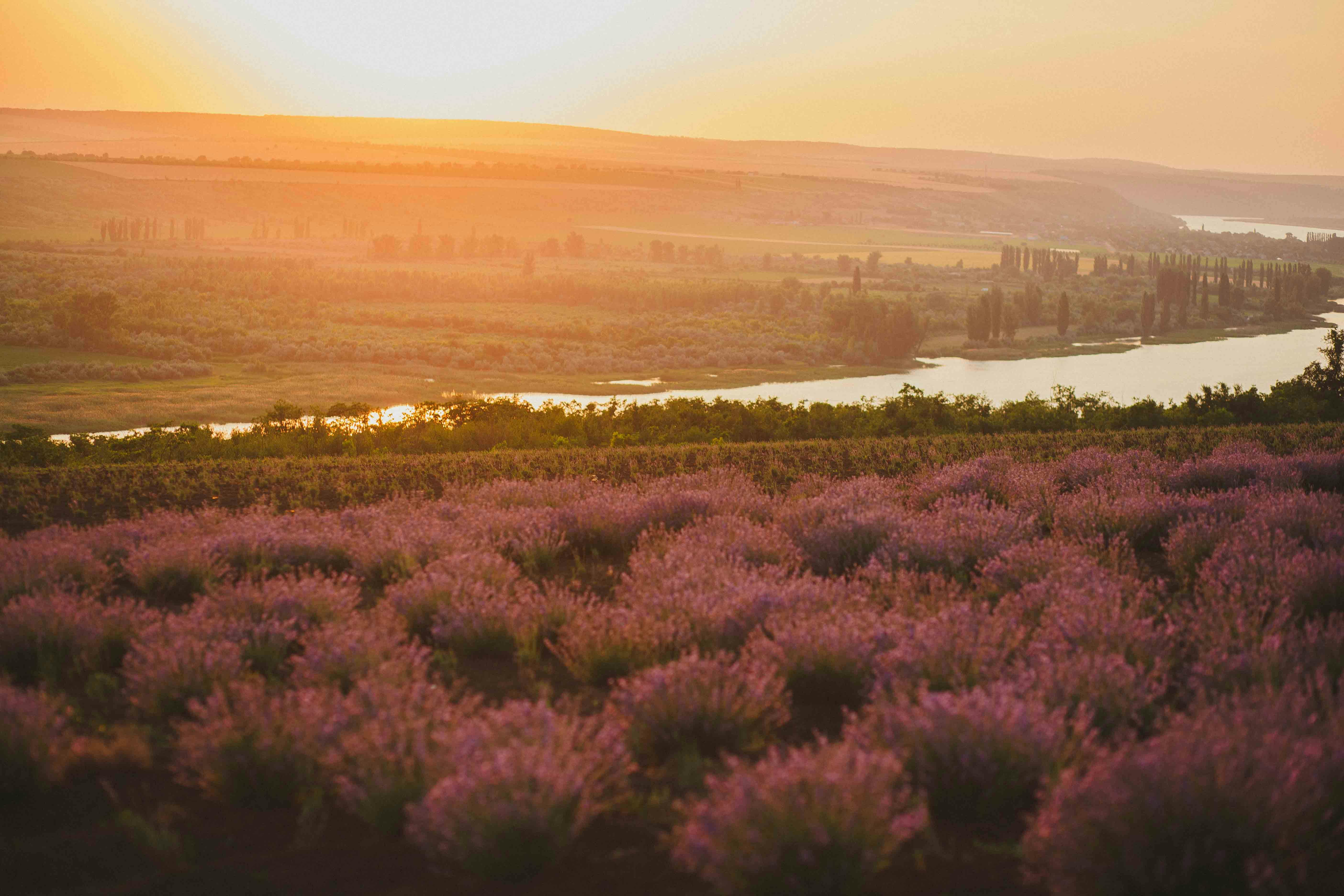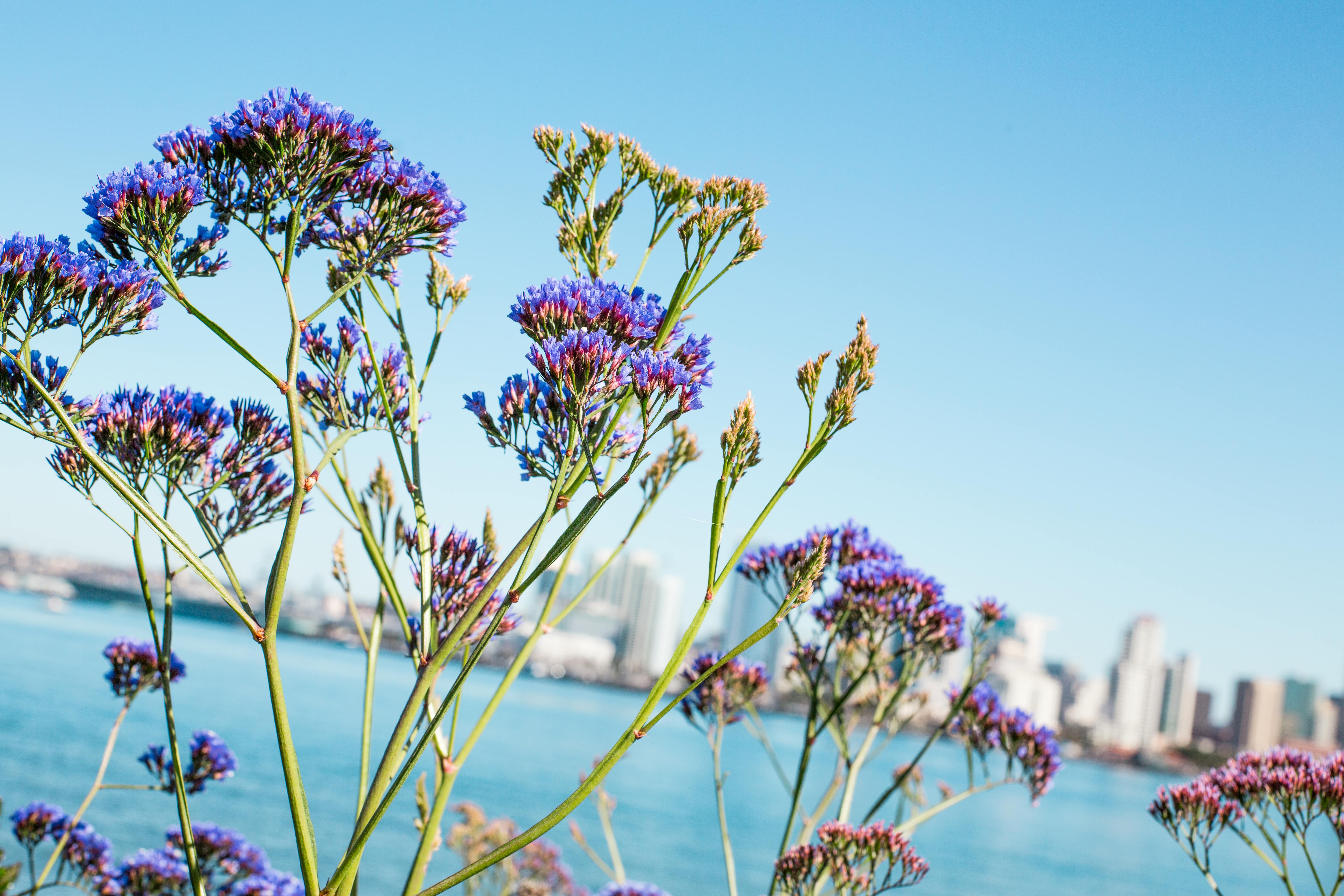Lavender is a beautiful and fragrant plant that adds a lot of character to any garden. It is important to water it correctly in order to keep it healthy and blooming. Knowing how often to water lavender can be tricky, as it depends on several environmental factors such as temperature, humidity and soil type. This article will provide information on how often you should water your lavender plants and what signs you can look for to determine if your plant needs more or less water.It is recommended to water lavender plants once a week, allowing the soil to dry out between waterings. During hot, dry weather, you may need to water lavender more frequently.
Determining the Frequency of Watering Lavender
Watering your lavender plants is essential for keeping them healthy and productive. Knowing how often to water your lavender plants can be tricky, as it depends on a variety of factors. The frequency of watering lavender should be determined by the type of soil, temperatures, and humidity levels in your area.
In general, sandy soils tend to drain quickly and require more frequent watering than clay soils. Sandy soils will need to be watered more often as they are more prone to drying out quickly due to their fast drainage rate. Clay soils retain more moisture and therefore require less frequent watering.
The temperature of your area can also affect the frequency of watering lavender. Areas with high temperatures will need to be watered more frequently than cooler areas, as the hot temperatures will cause the soil to dry out faster. In addition, higher humidity levels can reduce the amount of water needed as it reduces evaporation from the soil.
Overall, when determining how often to water your lavender plants, it is important to consider all these factors in order to ensure that your plants get the right amount of water they need. It is also important to monitor the moisture levels in the soil and adjust accordingly depending on conditions such as temperature and humidity levels in your area.
Frequency
Lavender is a drought tolerant plant and does not require a lot of water to thrive. However, it is important to water it regularly in order to keep it healthy and encourage blooming. Depending on the climate, lavender should be watered between 1-2 times per week. In hotter climates, it may need to be watered more often, while cooler climates may require less frequent watering. It is important to check the soil regularly to determine if the plant needs more or less water.
Amount
When watering lavender, it is important to make sure that you are providing enough water for the plant without overwatering it. Generally speaking, lavender should be watered deeply with approximately 1 inch of water per week. If the soil feels dry an inch below the surface, then it’s time to water again. If you do not provide enough water for your lavender plants, they will become dry and wilted due to dehydration. On the other hand, if you overwater them, they can suffer from root rot and other fungal issues. Therefore, make sure that you are providing just the right amount of water for your plants.
Timing
It is also important to consider when you are watering your lavender plants. It is best to water them in the morning so that any excess moisture can evaporate during the day and avoid rot or fungal growth overnight. Additionally, try not to wet the foliage of your lavender plants as this can lead to diseases such as powdery mildew or rust spots on their leaves. Finally, try not to water your plants during hot temperatures as this can cause them stress and shock.
By taking into account all of these factors – frequency, amount and timing – when watering your lavender plants, you can ensure that they remain healthy and blooming throughout their growing season!
The Impact of Overwatering Lavender
Water is essential for the growth and health of any plant, but too much of a good thing can have detrimental effects. Overwatering lavender can cause root rot, nutrient deficiencies, and other problems that can lead to the death of the plant. It’s important to understand how to properly water lavender in order to avoid these issues.
Root rot is caused by too much moisture around the roots of the plant. When roots are exposed to too much water, they become waterlogged and lack oxygen, leading to root rot. Root rot can be difficult to detect since it often starts on the inside of the roots, but signs include yellowing leaves and a wilting appearance. If left untreated, it can kill the entire plant.
Nutrient deficiencies can also occur with overwatering because excessive moisture leaches nutrients from the soil. This can lead to stunted growth, yellow leaves, and other signs of poor health. It’s important to monitor your soil for nutrient levels and adjust your watering accordingly in order to ensure your lavender is getting enough nutrients.
Finally, overwatering can also encourage fungal diseases such as powdery mildew or black spot. These diseases thrive in moist environments and can quickly spread throughout your garden if not treated quickly. To prevent these diseases from taking hold in your garden it’s important to practice good watering habits such as avoiding overhead irrigation or using soaker hoses instead.
In conclusion, it’s important to be mindful when watering lavender as too much moisture around the roots or soil can lead to root rot, nutrient deficiencies, and fungal diseases that can kill your plants if left untreated. Make sure you are monitoring your soil for moisture levels and adjusting accordingly in order for your plants to remain healthy and vigorous.
Climate and Water Needs for Lavender
Lavender is a fragrant herb that grows best in temperate climates. It thrives in full sun and does not tolerate temperatures below freezing. The ideal climate for growing lavender is warm and dry, with temperatures ranging from 50-75°F (10-24°C). It also needs plenty of sunlight to thrive, so it should be planted in a location that gets at least six hours of direct sun each day.
In addition to the proper climate, lavender also needs well-draining soil and regular waterings. Soil that is too wet will cause the roots to rot and can lead to fungal diseases. To ensure proper drainage, it is important to add organic matter such as compost or peat moss to the soil before planting. Once planted, lavender should be watered deeply once or twice a week, depending on the weather conditions. The soil should be allowed to dry out between waterings, as too much moisture can cause root rot. Mulching around the plants can help retain moisture and reduce weeds.
Finally, lavender benefits from regular pruning and deadheading during the growing season. Pruning helps keep the plants healthy by removing dead or dying branches while deadheading encourages the growth of new flowers throughout the season.

How to Properly Water Lavender
Watering lavender correctly is essential for its optimal growth. Lavender requires a moderate amount of water, and it’s important to know when and how much to water your lavender plants. Too much or too little water can cause damage to the plant and even lead to death. Here are some tips on how to properly water your lavender plants:
Water your lavender plants deeply, but infrequently. Lavender prefers deep watering which will encourage deep roots. Water the plant until the soil is saturated, but then allow the soil to dry out before watering again. This will help prevent root rot and other diseases caused by over-watering.
Be mindful of the weather when watering your lavender plants. In hot weather, you may need to water more often than usual since the soil will dry out faster. In cooler temperatures, you may only need to water every couple of weeks or so.
Apply a layer of mulch around the base of your lavender plants. This will help retain moisture in the soil and reduce evaporation from direct sunlight. It also helps reduce weeds, which can compete with your lavender for nutrients and water.
Check the soil moisture level before watering your lavender plants. Stick your finger into the soil about 2-3 inches deep and feel around for dampness or dryness. If it feels damp, then wait a few days before watering again; if it feels dry then it’s time to give your plant some water.
Avoid using an overhead sprinkler system when watering your lavender as this can lead to fungal diseases due to excessive moisture on the leaves and stems of the plant. Instead, use a long-spouted watering can or drip irrigation system that delivers slow, steady streams of water directly onto the roots of the plant.
Following these simple tips can help ensure that you are properly caring for your lavender plants and keeping them healthy for years to come!
Knowing When to Water Lavender
Watering lavender is a delicate balance that requires patience and knowledge. Too little water can cause it to become dry and brittle, while too much water can lead to root rot and other issues. It’s important to know when and how much to water your lavender plants in order to keep them healthy and thriving.
The first step in knowing when to water your lavender is understanding the soil type in the area where it is growing. Lavender prefers well-drained soil, so if your soil tends to be on the soggy side, you may need to amend it with sand or gravel before planting. Once planted, check the soil regularly for moisture levels by sticking your finger into the top two inches of soil. If it feels dry, it’s time to water.
When watering lavender, always use lukewarm water as cold water can shock the plant’s roots. Aim for a good soak every few days, depending on the weather conditions and temperature. In hot summer months, lavender may need more frequent watering than in cooler months. Additionally, mulching around the base of the plant can help conserve moisture and reduce evaporation from the soil surface.
It’s also important to avoid overwatering your lavender plants as this can cause root rot or other diseases. To prevent this from happening, make sure that you are not giving too much water at once and always check the drainage after each watering session; if there is standing or pooled water on top of the soil, then you are likely giving too much H2O.
Lastly, pay attention to how your lavender plants look; if they appear wilted or drooping then they may be thirsty for some extra hydration! With patience and practice, you will soon be able to master knowing when it’s time for a drink for your beloved lavenders!
The Benefits of Properly Watered Lavender
Lavender is an attractive and fragrant plant that has many beneficial properties. It is commonly used in aromatherapy and for its calming effects. Properly watering lavender can help it to reach its full potential and provide you with the best benefits possible. Here are some of the advantages of properly watering lavender.
One of the primary benefits of proper watering is that it encourages healthy root growth. Lavender needs plenty of water to thrive, and if the soil is too dry, its roots may become stunted or even die off completely. When you water your lavender regularly, you ensure that its roots remain healthy and can absorb all of the nutrients they need to survive.
Properly watering lavender can also help it to grow more quickly and vigorously. If your soil is too dry, your plant will not have enough resources to support a healthy growth rate, resulting in a slower rate of growth. By providing your lavender with adequate amounts of water, you can help it reach its full potential much faster than if it were left without water for too long.
Finally, properly watered lavender will also be more resistant to pests and diseases than plants that are not watered correctly. When plants are not given enough water, they become weakened and vulnerable to attack from disease-causing organisms such as fungi or bacteria. By giving your lavender enough water, you can help it remain strong and free from harmful pests or diseases.
Overall, properly watering your lavender can make a huge difference in how well it grows and thrives. Not only will it be healthier and more vibrant, but it will also be more resistant to pests and diseases that could otherwise harm or kill your plants if left unchecked. So make sure to give your lavender plenty of water today!

Conclusion
Watering lavender is an important part of caring for it. Too much water can cause the plant to become overwatered and too little water can cause it to become underwatered. To ensure that your lavender plant remains healthy, it is recommended that you water it once a week or when the top inch of soil feels dry. Be sure to use lukewarm water and avoid over-watering as this can lead to root rot. Adding mulch around the base of the plant will help maintain moisture and discourage weeds from growing. With proper care, your lavender should remain healthy for many years to come.
Overall, knowing how often to water lavender is essential in order for it to stay healthy and thrive. When watering, make sure that you check the soil first and use lukewarm water. Additionally, adding mulch around the base of the plant can help keep moisture in while discouraging weeds from growing. With proper care, you can expect your lavender plant to remain healthy and vibrant for many years to come.

